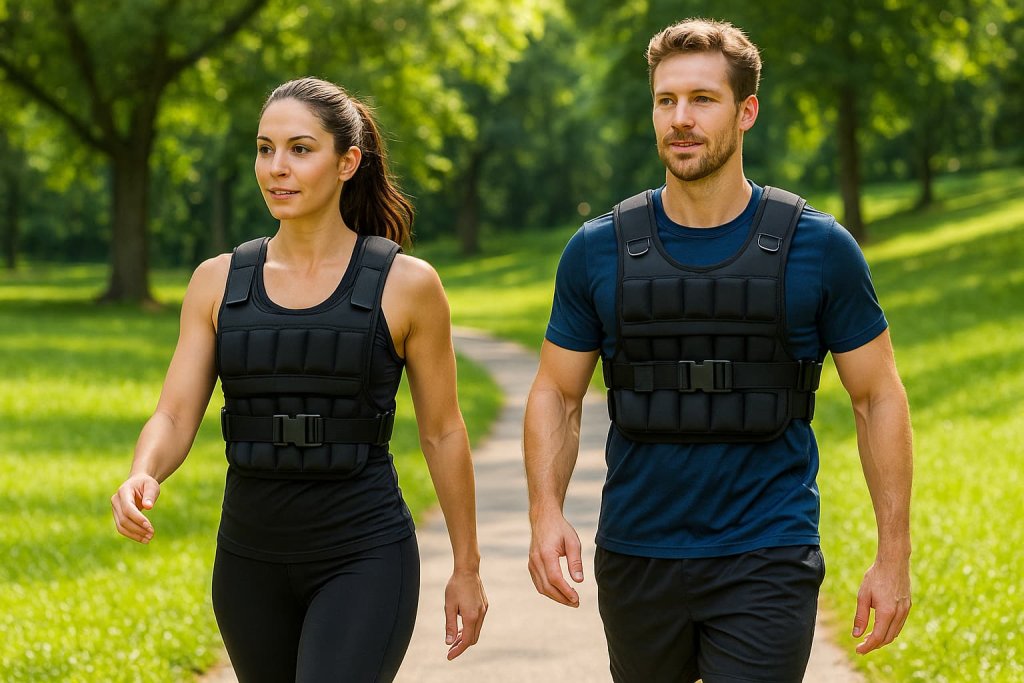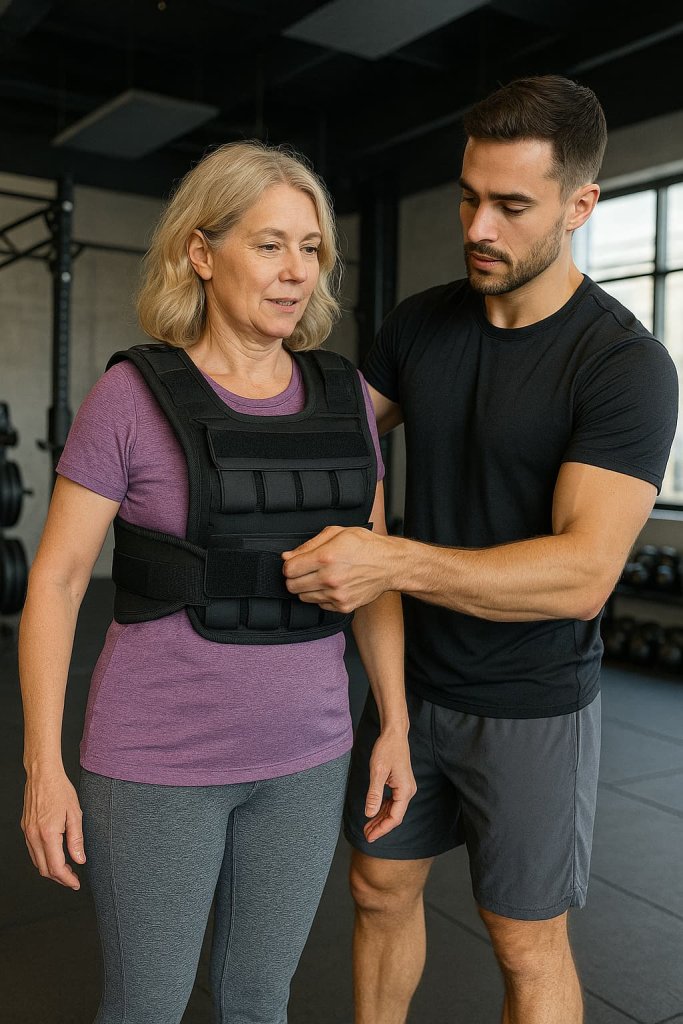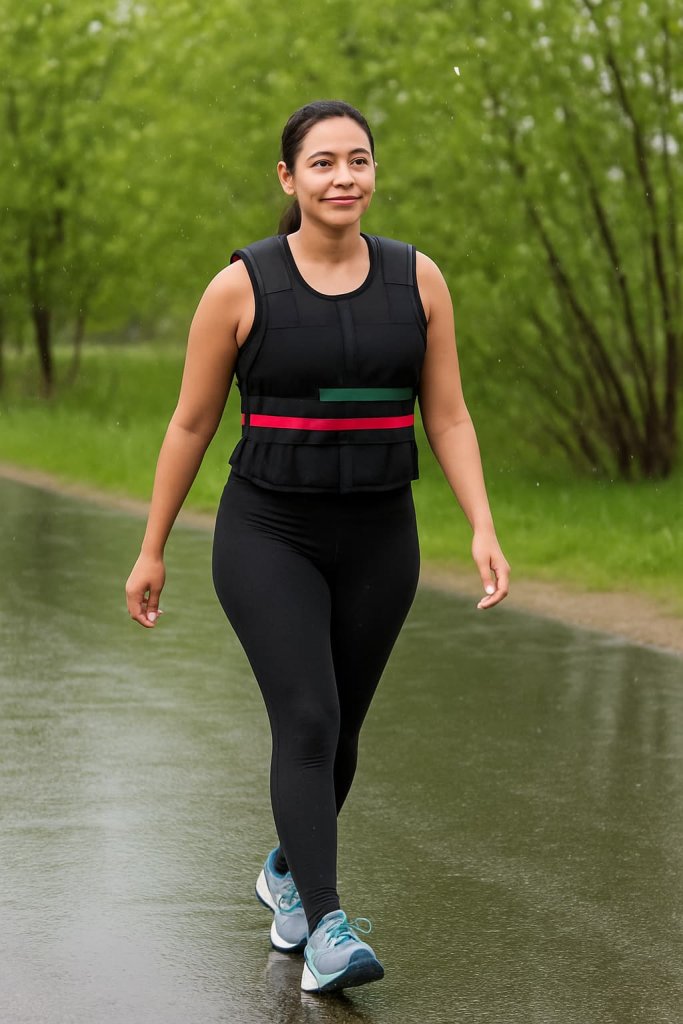Yes, walking with a weighted vest really does work—delivering more calorie burn, improved muscle and bone health, and a noticeable upgrade to your daily fitness.
With minimal equipment and zero need for a gym, you can make each walk count toward fat loss, strength, balance, and posture improvements. But how does it work, what are the real results, and what do you need to know before you start? This guide covers the evidence, before-and-after user experiences, drawbacks, practical steps, and frequently asked questions—so you get the most out of your walking routine.

What Are the Proven Benefits of Walking with a Weighted Vest?
1. Significantly Boosts Calorie Burn and Fat Loss
Wearing a weighted vest increases your energy expenditure by 10–20% compared to unweighted walking (Verywell Health, 2024). The extra load means your heart, lungs, and muscles work harder—even if your speed and distance stay the same.
- Research: Adults with obesity wore an 11 kg (24 lb) weighted vest for eight hours a day. Over three weeks, they lost nearly five times more body fat than a control group wearing lighter vests—without any changes to their diet or exercise (ScienceDaily, 2020).
- Real-life: A TikTok user documented losing 40 pounds in nine months with daily weighted walks, highlighting the method’s effectiveness (NY Post, 2025).
Tips:
- Start with 5–10% of your body weight. For example, if you weigh 150 lbs (68 kg), you should start with a weighted vest that is about 8 to 15 pounds (3.5 to 7 kg). Starting within this range helps your body adapt safely and reduces the risk of joint or muscle strain.
- Increase weight or walking time as your fitness grows.
- Combine weighted walks with healthy eating for best fat loss results.
2. Improves Strength, Endurance, and Posture
Walking with a weighted vest engages your legs, glutes, core, and upper body muscles, turning a walk into a mild resistance workout.
- Expert experience: Fitness pro Chalene Johnson reported better VO₂ max, balance, and joint stability after 30 days of walking with a 12-pound vest (BodyNetwork, 2025).
- User report: A Tom’s Guide writer found that just one week of daily 5K walks with a 7 kg vest made walks more intense and improved her confidence and posture (Tom’s Guide, 2024).
Tips:
- Focus on good posture—stand tall, engage your core, and don’t lean forward.
- Choose a vest that fits snugly and distributes weight evenly.
3. Supports Bone Health and Balance
Weighted vest walking can help maintain or improve bone density, especially for older adults and postmenopausal women.
- Research: A five-year study in postmenopausal women showed that using weighted vests during walking and jumping exercises helped maintain hip bone density compared to no added weight (AARP, 2024).
- The extra load stimulates bone-building and engages stabilizer muscles for better balance.
Tips:
- If over 50 or at risk for osteoporosis, consult your doctor before starting.
- Start with very light weights and short walks to test comfort.
4. Makes Walking More Motivating and Sustainable
Weighted vests offer a simple, affordable upgrade to your daily routine and help keep motivation high with new challenge.
- Emma, a midlife walker, noticed stronger legs and higher endurance after 30 days and felt more motivated for her daily walks (BodyNetwork, 2025).
- Busy adults find weighted walking offers big results in little time—no gym needed.
Tips:
- Try outdoor walks on varied terrain for extra balance and muscle engagement.
- Listen to music or a podcast to boost enjoyment.
Drawbacks & Limitations: What to Watch Out For

While benefits are compelling, weighted vest walking has potential drawbacks and is not for everyone:
- Injury risk: Too much weight, poor posture, or improper fit can strain joints, back, or shoulders. Those with back pain, arthritis, or balance issues need caution.
- Discomfort or chafing: Ill-fitting vests can rub skin or cause shoulder soreness, especially on long walks or with low-quality designs.
- Not a replacement for strength training: It boosts muscle tone but won’t replace dedicated resistance or plyometric training for maximal gains.
- Fatigue or overtraining: Jumping in too fast can lead to soreness or discourage regular walking.
- Balance issues: Older adults or those with balance concerns are at risk for tripping or falling. A small study noted back pain in some obese participants using heavier vests (ScienceAlert, 2024).
Bottom line: Start light, progress slowly, and listen to your body.
Real Before & After Results: What Can You Expect?

| Outcome | What to Expect After 2–4 Weeks |
|---|---|
| Fat Loss | 2–5x greater fat loss (with heavier vest use and consistency) |
| Muscle Tone | Stronger, firmer legs, glutes, and core |
| Cardio Fitness | Improved stamina and endurance |
| Posture & Balance | Straighter walking, more confident stride |
| Motivation | Renewed interest in daily walks, improved mood |
| Drawbacks | Muscle soreness, shoulder or skin discomfort if overused |
Tip: Most users notice increased effort and “better walking mechanics” within the first week—visible changes in stamina, shape, or posture typically follow in 2–4 weeks.
Is Weighted Vest Walking Safe? Key Precautions
Weighted vest walking is generally safe, but take these precautions to minimize risk:
- Start with 5–10% of your body weight and short walks (10–15 minutes).
- Increase weight or time—not both at once—by small amounts each week.
- Maintain upright posture and avoid slouching or overstriding.
- Check for soreness or irritation after each walk and adjust vest as needed.
- If you have a medical condition, osteoporosis, or are pregnant, consult a doctor first.
- If you experience joint pain, numbness, dizziness, or sharp discomfort, stop and seek advice.
How to Get Started: Practical Tips
- Choose the right vest: Look for adjustable, snug, and padded vests.
- Start light: Begin with 5–10% of your body weight.
- Short walks first: 10–15 minutes is enough at the start.
- Track progress: Gradually increase weight or distance as you adapt.
- Rest & alternate: Mix weighted and regular walks for recovery.
- Stretch afterwards: Stretch calves, hamstrings, and shoulders to prevent soreness.
- Maintain your vest: Wash regularly and inspect for wear and tear.
Example Beginner Plan:
- Week 1: 10–15 min, light vest (5% of body weight)
- Week 2: 20 min
- Week 3: 25–30 min, increase vest to 7–10% of body weight
- Week 4: 30 min, try brisker pace or hills
Frequently Asked Questions (FAQ)
Can anyone use a weighted vest for walking?
Most healthy adults can, but those with joint, spine, balance, or heart issues should consult a doctor first.
How quickly will I see results?
You’ll likely feel increased effort and engagement in your first walks; noticeable fitness and posture changes usually appear within 2–4 weeks.
How heavy should the vest be?
Start with 5–10% of your body weight. For example, if you weigh 150 lbs (68 kg), start with 8–15 lbs.
Can it replace strength training or running?
It’s a great supplement, but not a full replacement for strength or plyometric training. Combine for best results.
What should I do if I feel pain?
Stop, check fit, reduce weight, or rest. Persistent pain requires professional advice.
What’s the best type of vest?
Choose even weight distribution, adjustable straps, and comfortable padding. Avoid vests that restrict breathing or movement.
Final Verdict: Does It Really Work?
Yes, walking with a weighted vest is proven to work—increasing calorie burn, supporting fat loss, building muscle and bone strength, and making walks more effective.
It’s a safe and sustainable fitness upgrade for most people, as long as you start slow, listen to your body, and avoid common pitfalls.
Helpful Resources
- Verywell Health – Weighted Vest Walking Benefits (2024)
- ScienceDaily – Weighted Vest Fat Loss Study (2020)
- AARP – Weighted Vest for Bone Health (2024)
- Tom’s Guide – Walking with a Weighted Vest (2024)
- NY Post – TikTok Weighted Vest Transformation (2025)
Conclusion
Want to see faster results and more benefits from your daily walks? Try a weighted vest—start light, be consistent, and pay attention to your body.
If you’re just getting started, talk to a fitness professional or doctor, and remember: slow, steady progress is the key to success!
